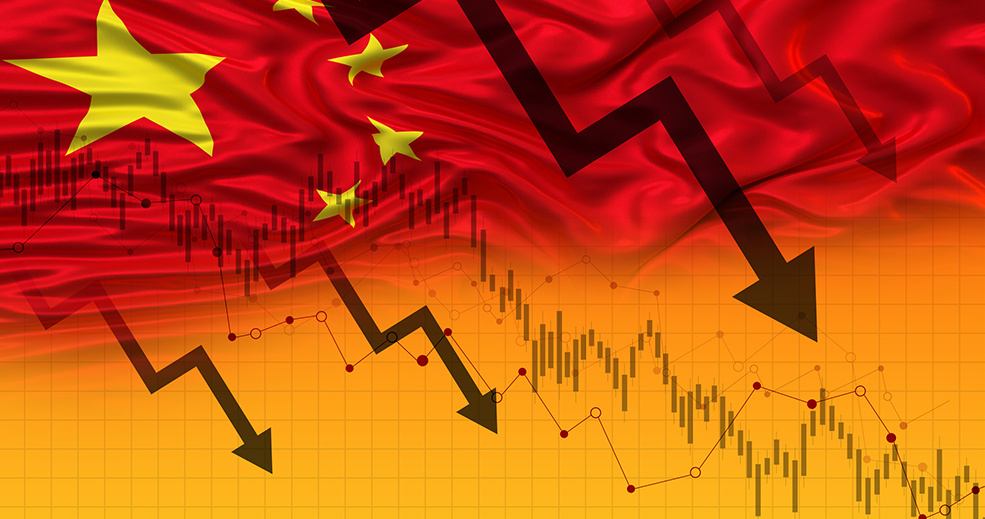
China announces economic support after a further drop in stock market indices
On 16 January in Davos, Chinese premier Li Qiang proudly spoke of China’s 5.2% growth which, he said, had been achieved without having to resort to “massive stimulus”. However, rather than reassuring investors, this announcement had the opposite effect: Chinese stock markets once again stalled last week. In light of this panic reaction, Chinese authorities have announced new measures in support of the economy.
What is China’s real growth rate?
At issue are concerns over the real health of the Chinese economy. Rhodium Group estimates that actual growth in 2023 was only around 1.5% and says the figure published by China’s National Bureau of Statistics is not consistent with the country’s activity and expenditure levels1.
By breaking down contributions to growth, Rhodium’s analysts show that the slump in the real estate sector, which reportedly cost 1.6 percentage points of GDP in 2023, is unlikely to have been offset by an acceleration in investment in other sectors. The same can be said of the contribution of government consumption, which matches neither the level of receipts – which have declined since 2015 – nor the rate of local expenditure. Only the contributions of foreign trade and household consumption are found to be credible, albeit also slightly inflated, but they are insufficient to add up to the 5.2% growth figure announced by the authorities.
Furthermore, consumers’ preference for savings – reflected in both an increase in surplus savings and a decrease in borrowings, with consumers repaying their debts early – will continue to cloud the outlook in 2024.
Whatever the real level of growth, there are two key points to note. First, while the opacity of China’s statistical system is nothing new, it is getting worse. Numerous data series that could be used to more accurately monitor industrial production are no longer available; indices relating to the labour market (both for young people and more generally) underestimate the real level of unemployment by not taking migrant workers into account; and the weighting of the inflation index continues to be veiled in secrecy.
As Rhodium Group points out, international institutions – notably the IMF – have yet to sound the alarm over the credibility of China’s statistical system and their forecasts continue to track very close to those issued by the authorities. A paradigm shift in this area would serve as an extremely strong signal and would undoubtedly be seen by the Chinese Government as an attack.
In the meantime, one thing is certain: the Chinese economy is not doing very well and investor confidence is being eroded. Last week’s stock market correction is a sign that markets do not buy the current level of company valuations, which they think should be lower.
New economic support measures
After that black day of 22 January, the authorities decided a more vigorous response was needed.
First they announced a 50 basis points (bps) reduction in the bank reserve requirement ratio, bringing the total reduction since April 2022 to 150 bps, as well as a 25 bps cut in the discount rate. These monetary easing measures are aimed at boosting banks’ liquidity to encourage them to continue granting new loans to businesses.
The second decision, set to be confirmed and clarified in the next few days, was to create a 2 trillion yuan (around €255 billion) emergency fund to support Chinese equities. The money could come from mostly dollar-denominated foreign reserves held by state-owned corporations, which have benefited from favourable foreign exchange effects over the past few months as the yuan has depreciated against the greenback. A similar fund was set up back in 2015 after a speculative bubble burst as a result of a crisis of confidence among investors, who suspected the authorities of inflating growth figures even as more and more signs of a slowdown emerged. That fund failed to prevent a very sharp correction in equities.
Crises of confidence like these, which also happen in the foreign exchange market, are generally hard to stem. In China’s case, the risk is that the measures announced are once again seen as being too tentative relative to the real health of the Chinese economy, and above all that they are not targeted at the right sectors, starting with domestic household consumption.
With this new stock market setback, Shanghai has lost a bit more ground to its Japanese competitor – with the Tokyo Stock Exchange regaining its place as the leasing Asian market – and continued to drag the Hong Kong market down with it. To put out this fire, the Chinese authorities have reached for two of their usual monetary policy tools: cutting interest rates with the aim of freeing up liquidity for banks, and creating an emergency fund to stabilise the stock market – a method already used without much success in 2015.
While these measures might perhaps reassure foreign investors, whose opinion of China has evolved significantly over the past two years as a result of the economic slowdown and its causes, both structural (demographics, the bursting of the real estate bubble and the mismatch between investment and consumption) and (geo)political (regulatory tightening, the impact of US-China tensions on foreign trade, and China’s zero-Covid policy), they still fail to address the deep-seated problem of consumer confidence. Although the drop in foreign direct investment (FDI) and foreign capital flight are a problem for the Chinese economy, FDI and foreign capital have never equated to more than 5% of GDP. Contrast this with the real estate sector, which used to account for nearly 25% of the economy’s added value. Last week’s conflagration needed to be put out, but having done so does not absolve the authorities of the need to attack the main centre of the fire.







